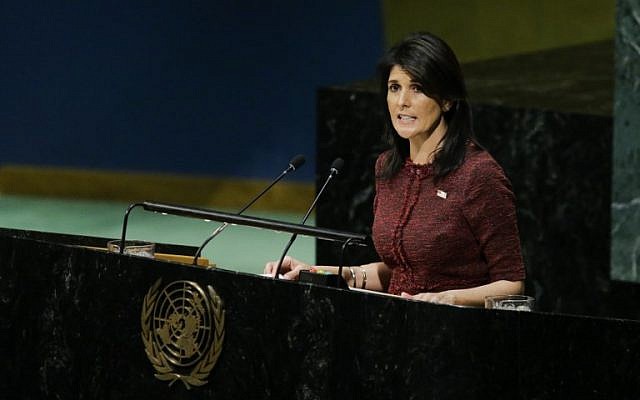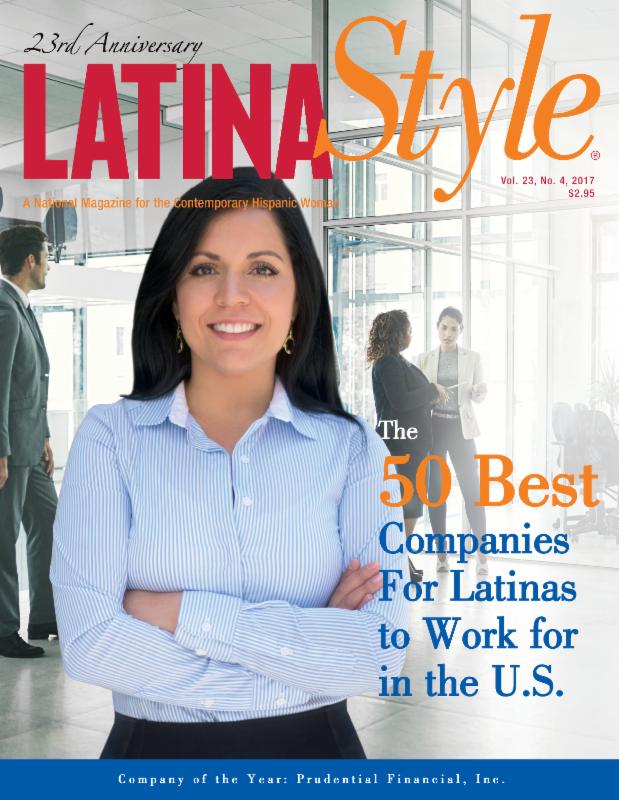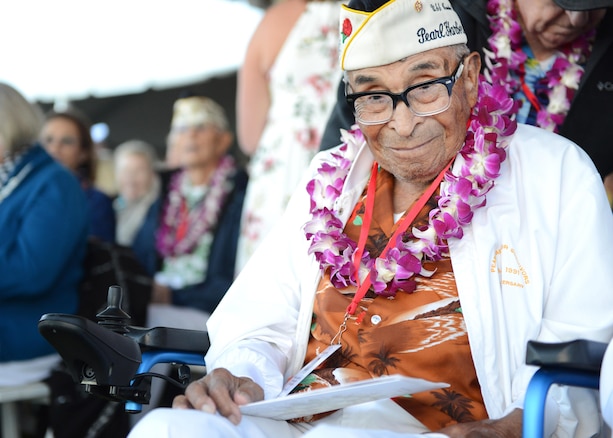First published in Somos
en escrito
The
Latino Literary Online Magazine, November 15, 2017
Somos en
escrito caught up with the great Felipe
Ortego. This is his memoir about running in Luxembourg with an
Olympic gold medallist and learning about intention, winning, and
life. ~ Armando Rendon
|

|
|
Lamesch house on Rue de Beggen, Luxembourg, where the author
lived, in the 50s is nearby a bend in the street. The trolley, which he remembers,
vied with the bicycle and walking as transportation.
|
I met
Josef Bartel more than 60 years ago in the Luxembourg stadium one
evening towards the end of an August day in 1956 while running laps.
Luxembourg is a small country of some 1,600 square miles and, in those
days, had a population of less than a quarter million. Dismembered
three times in its history and governed at various times by France,
Spain, Austria, Germany, Holland, Belgium, Russia, and Italy, the
origins of Luxembourg date back to Roman times. One of the still
standing bridges of that era attests to the durability of Roman
architecture. In 1815 Luxembourg was made a grand duchy by the
Congress of Vienna and united with the kingdom of the Netherlands. Afterward
it became the crossroad of Europe.
From
anywhere in the capital city of Luxembourg one can see the rooftops
and watchtowers of the grand ducal palace rising from the center of
the city and from the American cemetery where General George Patton
lies buried. In 1945, Patton’s Fifth Armored Division liberated the
city from the Germans.

I
was new to Luxembourg, having arrived a scant week earlier, and at 30
still “working out.” I was progressing well with my form on the
track, I thought, though the clay track was a novelty for me. I had
started running as a kid in San Antonio and Chicago, mostly on asphalt
and concrete. When I went to the University of Pittsburgh, I learned
to run on a cork track. I managed the mile well enough to come in
third mostly and sometimes second in competition.
But
on that evening, in the Luxembourg stadium, I felt, rather than heard,
a runner behind me, moving so rhythmically down the straightaway I was
compelled to turn to see who could run like that. I learned later it
was Josef Bartel, whom I called Jose, 1500 meter gold medalist at
the1952 Helsinki Olympic Games and now an engineer with the city of
Luxembourg. As he slipped by me, I marveled at his form, so
effortless in motion. He nodded acknowledgement, and the second time
around dropped in beside me at my pace and introduced himself.
 I told him I lived on the
Rue de Beggen in the Lamesch house, the horticulturalists renown-ed
for their roses. Yes, he knew the place well. He told me that during
the German occupation of Luxembourg a high German officer had lived
there.
I told him I lived on the
Rue de Beggen in the Lamesch house, the horticulturalists renown-ed
for their roses. Yes, he knew the place well. He told me that during
the German occupation of Luxembourg a high German officer had lived
there.
Yes,
I could understand that. It was an old, elegant 19th century manse
in the European style, built for a family of leisure. It sat on a
large acreage just north of the city on the way to Bitburg, Germany.
My family and I occupied only a section of the house, partitioned for
a part of the Lamesch family now gone. In one of those quaint Mozart
rooms on the upper storey of our section of the house I wrote and
pursued my interests in literature.
“What
brings you to Luxembourg?” Jose asked. I explained what brought me
to Luxembourg and how I came to be running in the stadium.
“I
could tell you were an American by the way you run,” he said. I
smiled, amused by that piece of deduction. “Americans are too wound
up when they run,” he said. “The only exception was Jesse
Owens,” he added. “But this is not the place to run,” he went
on. “This is the place to practice form, get a feel for the
relationship between you and the track.” Only the barest hint of an
accent suggested he was European and not American. Suddenly he spoke
to me in French. After a bit he said, “You speak French very well.
Almost like a native. Where did you learn it?
“I
studied it in college,” I said.
“You
certainly did not learn that kind of French in college,” he said,
emphasizing the word “college.”
“Well,
no,” I said. “I lived in Paris more than a year before coming
here.
“Of
course,” he said. “And where was college?”
“Pitt,”
I said. “The University of Pittsburgh.”
“And
your major?”
“Comparative
Studies. Philosophy, Languages, Literature, Writing.”
“I
see,” he said.
We
ran several laps in silence, then unexpectedly he began to speak
philosophically about running.
“You
see,” he started, “most people approach running through the mind.
Thinking a distance is something to be overcome by time. The clock becomes
the focus, not the run. Others are defeated by the distance. No sooner
are they out of the starting blocks than they are thinking about how
far they have to go or how much more they have to run.”
I
agreed with his premises. My own approach to running was to focus on
the next step, I explained.
“That
too can be a liability,” he said. “You forget about the field and
that the object of the run is to place first. Have you ever placed
first? He asked.
“No,”
I said. “Never!”
“Hm,”
he responded, and ran other laps without saying a word. Then he
apologized for hav-
ing
to leave me but he still had a fair amount of work to do on the track
before it got darker. He was preparing for a meet in Trier in Germany
that Saturday. Would I care to go?
I
accepted, and he went off, lapping me several times.
Before
leaving the stadium he called out. ”I’ll pick you up at your place
at 8 on Saturday morning. Okay?”
 Saturday
morning he picked me up promptly at 8 a.m. in his black Citroen that
looked like something out of a Chicago gangster movie of the 1920s
or 30s. “It’s old and cheap,” he said. “Engineers don’t make
much money. And the gold on Olympic medals doesn’t bring very much
on the open market.
Saturday
morning he picked me up promptly at 8 a.m. in his black Citroen that
looked like something out of a Chicago gangster movie of the 1920s
or 30s. “It’s old and cheap,” he said. “Engineers don’t make
much money. And the gold on Olympic medals doesn’t bring very much
on the open market.
The trip to Trier didn’t take very
long. Trier is an old Roman city just north of where the Mosel River
joins the Saar in Germany. En route we talked about the United States,
Indo-China, our kids, our wives, our futures.
“So you’re a writer,” he said. “Written anything I’ve
read?” Tavern
in Trier.
“Not
yet,” I said, “But it’s coming.”
“What
do you write? Novels?”
“Nothing
that ambitious yet. Poetry, short stories, mostly journalistic
pieces. Reportage. I worked on the Pitt paper for three years and
interned with the Pittsburgh
Post Gazette the summer of 1952.
“Anything
published?”
“Yes,
but not by-lined. The New World Society of Pittsburgh published a
small chapbook of poetry by me four years ago.”
“I’d
like to read it sometime. What’s it called?”
“The
Wide Well of Hours.”
“How
are your children doing in school?” he asked, changing the subject.
“Fine,”
I said. “Just fine.”
“No
trouble with the languages?”
“None,”
I said. “They’re becoming multilingual.”
“That’s
good,” he said. “The more languages we learn the better off we
are. What language do you speak at home? With your wife and kids?”
“English
mostly. Some Spanish.”
“You’re
Spanish, aren’t you?” he asked. That’s a Spanish name you
have.”
“The
name is Spanish, but my folks were from Mexico.”
“But
you were born in the United States, weren’t you?”
“Yes,”
I said. “I’m an American.”
“But
you’re also Mexican?”
“Yes,”
I replied. Hyphenating my ancestry was still in the future. I thought
of myself as an American of Mexican ancestry. Achieving Chicano
consciousness still lay ahead of me.
“What
other languages do you speak–-besides English, Spanish and
French?”
“Some
Italian, a little Portuguese. I learned some Chinese when I was in
China.” I didn’t tell him I had studied Russian as part of my
tenure with the Air Force Survival School at Reno, Nevada. I was
cautious then about those revelations, especially about my work as a
Threat Analyst in Soviet Studies for the Air Force.
“Taiwan?”
he said, cutting into my thoughts.
“No,
China,” I said, “Mainland China.”
“Oh?”
he said, surprised. “When were you there?”
“Right
after the war,” I said.
“See
much?”
“Yes.
Shanghai, Peking, Tientsin, Tsingtao, and lots of poverty.”
“Poverty
is everywhere,” he said. Then after a pause, “Tsingtao? That’s a
port city in the Shantung Peninsula, isn’t it?”
I
was surprised that he knew that. “Yes,” I said. “I spent almost
a year there, after Shanghai.”
“Were
you in the Army?”
“No,
Marines.”
“I
was too young for military service,” he said. “I was ten when the
Germans occupied Luxembourg. After the war, I went to school in the
United States. But I missed Luxembourg, the Ardennes. I run there
every day. Maybe you’d like to join me?’
“Yes,”
I said.
The meet at Trier was exciting. Jose won the distance races handily.
He had come sure of himself, knowing he was going to win. “You
see,” he said on the way back to Luxembourg, “you have to see
yourself as the winner. Know you’re going to win.”
“And
if you don’t win?” I asked.
“That
can’t be,” he responded, matter of factly. “If you know you’re
going to win, there can be no other possibility.”
“None
whatever?”
“None.”
“Do
you always win?” I asked.
“Yes.
When my intention to win is high.”
“I
see,” I said, though still not quite sure of the meaning of his
words, trying to grasp the philosophy.
“When
my intention is not high, I don’t win. When your intention to win is
high, and you want to win, you will win.”
“Hm?”
I said.
“You
don’t believe that, do you?” he said, sensing my apprehension.
“How many wins have you had?”
“Wins?”
“Yes.
In running.”
“None,”
I said.
“Your
intentions are not very high then,” he said. “We’ll work on that
when we run in the forest.”
“Fine,”
I said, still perplexed.
“Don’t
worry about it,” he said. “It took me a while to get the hang of
it too.”
It
would take me almost two more decades to really get the hang of
it–the meaning of intention–not until my meeting with Werner
Earhart and EST (Earhart Seminar Training). In EST, “intention”
is the production of an outcome not predicated by the circumstances.
I didn’t understand that yet. It took years before I fully
understood the notion of intention. But I embraced the notion before
fully understanding it. I had achieved enough consciousness to
recognize verities and to direct them towards my own fulfillment.
The
Ardennes is an old forest between Luxembourg and Belgium, just east
of the Meuse River. Some of the fiercest fighting of World War One
took place there. In 1918 when the fighting stop-ped, the armistice
line ran practically through the Ardennes. Later I would find old
relics of the “great war” strewn everywhere I passed in the
forest. The kids found shells I cautioned them to throw away. In my
mind’s eye I saw the tragedy–and futility–of trench warfare.
The French with their impregnable Maginot Line. General Patton
called it a monument to man’s stupidity.
|

|
|
Hikers on a trail in the Ardennes Forest, near where the
author jogged with Josef Bartel
|
|
|
 But
that was in another war. My own war was not much better. Our assaults
in the Pacific against fixed Japanese fortifications were suicidal.
The carnage. The incredible loss of human li-ves for small pieces of
land barely visible on maps. There was no glory in war; only
disillusionment–-a loss of innocence. That’s what made stories of
war so compelling, stories like All Quiet on the Western Front
and A Farewell to Arms. Not
the war itself, but the romantic aftermath of war. Everywhere about me
in the forest I sensed the consequences of war and its futility.
Thomas Gray had it right: The paths of glory lead but to the grave.
But
that was in another war. My own war was not much better. Our assaults
in the Pacific against fixed Japanese fortifications were suicidal.
The carnage. The incredible loss of human li-ves for small pieces of
land barely visible on maps. There was no glory in war; only
disillusionment–-a loss of innocence. That’s what made stories of
war so compelling, stories like All Quiet on the Western Front
and A Farewell to Arms. Not
the war itself, but the romantic aftermath of war. Everywhere about me
in the forest I sensed the consequences of war and its futility.
Thomas Gray had it right: The paths of glory lead but to the grave.
Jose
introduced me to the mysteries of the Ardennes and to the running
techniques he called “freifart”–free style.
“The
idea is to keep moving,” he explained. “Walking, jogging,
running. But never stopping. Americans train for running by
doing laps on a track. They try to psyche out the run by training in
the context of the meet. In Europe we train away from the
“track.”
After
warmups we started out with a brisk walk, then jogged several miles,
ran hard for two miles or so, walked briskly again, alternating the
sequence, always on the go. We made our way into the deep, sunless
sheol of the forest, bounding over layers of timeless leaves,
springing us forward like pogo sticks.
“Good
for balance,” Jose said.
Mile
after mile we ran, Jose instructing me on breathing, bringing air into
the lungs through nose and mouth.
“You
don’t need a lot of air,” he said, hardly puffing after the first
ten miles or so. “The body gets air through the skin. The lungs
don’t need a lot of air, just a steady flow to keep the brain going.
More importantly–don’t think about the air. The minute you do, you
start defeating yourself. That’s like a musician who starts to think
about the notes during a performance. The minute he does, he’s going
to make a mistake. A musician feels the music, let’s it all flow
rhythmically out of him. Same for a runner. You start thinking about
the run, the air, the distance, the time, you’re dead. Every run has
a rhythm of its own. Just like every piece of music. Different
tunes, different rhythms. When you start a run get a feel for its
rhythm. Relax, settle into the run. Concentrate on the form. Stretch
the legs, point the toes, get the tonus high, arms up, close to the
body, the way birds tuck their legs in when flying, minimum drag,
unnecessary motion.”
During
that first run in the forest I got a better sense of running. I had
never framed running in a philosophical context before. I just ran.
I learned good technique at Pitt, but no philosophy of running. That
seems strange coming from a student of comparative philosophy. But in
those days I was still learning about philosophy. I was still a year
away from my meeting with Jean Paul Sartre. A decade still lay ahead
of me and my epiphany as a Chicano.
Jose
and I ran in the Ardennes three times a week. At first I didn’t
think I had the stamina for it, but I discovered that while stamina is
certainly a product of conditioning it’s also a matter of mind.
It’s not our body that defeats us, but our mind, those mind-forged
manacles of William Blake, that small inner voice of the mind creating
unnecessary barriers and obstacles for us to overcome, telling us
we can’t do something, we can’t make it, we’re not strong
enough, not smart enough, encouraging us to fail.
Of
course, there are limits to endurance, but historically we learn
about men and women who surpass those limits of endurance. Helen
Keller had every reason to fail, but didn’t. Joan of Arc could
have failed, but didn’t. Later I would define that spark that takes
some human beings beyond the limits of endurance as “ignis–the
fire within.”
“That’s
right,” Jose said, smiling broadly when we talked about that fire
within. “You’ve read those stories about people who survive in
environments that should have killed them–-prisoners of war. It’s
not ‘heart’ that pulls them through. It’s a triumph of
‘spirit.’ I’ve known great athletes who had ‘heart’ but
lacked ‘spirit’–the will to go beyond what they experience as
pain. I don’t mean ‘spirit’ and ‘will’ are the same.
They’re not. ‘Spirit’ is ‘endurance.’ ‘Will’ is
‘determination.’ You see, people can endure captivity,
depredation, and countless other adversities. But if the determination
to endure isn’t there, then the spirit perishes, withers and dies,
oftentimes taking the body with it. You cannot just want to endure;
you must intend to endure. And that means doing all that’s necessary
to complete the intention.”
“I
understand,” I said. Years later I would understand more keenly
what Jose was talking about, more personally from the poem I Am,
Joaquin by Rodolfo “Corky” Gonzalez, Chicano activist from
Denver. In the poem, Joaquin is the Chicano Everyman who must endure
for the sake of his people. From a philosophical commitment to endure,
he changes his stance assertively to an intentional commitment to
endure. From ‘I shall endure,’ he says ‘I will endure’.” The
utterance is without equivocation. At the end of the poem, Joaquin’s
intention to survive is clear and unequivocal. We know he’ll
survive. He has to survive–for his people.
For
me, however, at that moment the aperture of understanding what Jose
Bartel meant by the word “intention” had barely opened. But at
that moment I also realized how much of my life lacked intention, how
little I had committed myself to achieving a real triumph of the
spirit–-in running. I was nonetheless buoyed by that understanding,
however small its aperture.
The
weeks passed quickly. At 30, I was in the best physical shape I had
ever been. More importantly, though, I was mentally at one with my
body. I ran easier alongside Jose. In the Luxembourg stadium he
taught me how to “feel” the track, how to improve my form on the
turns, how to maximize the straightaways. At times I’d catch him
smiling, nodding, knowing I was grasping a philosophy of life that
included running. That’s what it was: a philosophy of life, not a
philosophy of running. Running was just a manifestation of that
philosophy. Running was not the object; life was. I remembered a
doggerel dictum of my youth: “As you wander on through life,
whatever be your goal; keep your eyes upon the donut, and not upon
the hole.” I was to discover there was more philosophy in that
doggerel than perceived.
That
October I entered the lists for the American All France Track &
Field Competition in Chaumont, the capital city of Haute Marne in
Northwest France. My family came to cheer me on. Jose said he came to
see me win.
“You
do want to win this race?” he asked, warming up with me in the
minutes before the mile run.
“Yes,”
I said. “I do.”
“Doesn’t
sound like it,” he said. “Look! Close your eyes! Visualize the
track. That’s it. Take three mental laps around the track. As you
make that first turn, start stretching your stride. Don’t fight the
track. Don’t change your rhythm. That’s it! You’ve got it! Move
on past the leader. Keep your eyes on the tape. You’re going to be
number one. Hear? Number one! Did that feel good?” he said, as I
opened my eyes.
“Yes,”
I said. “That felt good.”
“Make
it happen, just the way you saw it,” he said.
“I
will! I will!” I said, surprised by the strength of conviction in my
voice. Many people comment today about the strength of conviction in
my voice. I tell them it’s my Marine Corps voice, but I know it’s
the voice Jose Bartel helped me find.









 S
S







 To contact Louis J. Benavides
To contact Louis J. Benavides 

 Retired
Colonel, United States Air Force Reserves, Samuel Idrogo, was
born in Laredo, Texas on February 15, 1935. He was born to a
family from humble beginnings with three sisters and one
brother. As a young child, Colonel Idrogo was always known to
spend a lot of time with model airplanes. He attended Laredo
Martin High school and had a strong interest in mathematics
and science courses. He was a distant runner on the track team
and was selected as ROTC Cadet of the Year and voted “Best
All-Around Male.” In his senior year, Colonel Idrogo served
as Class President. He was selected as the Executive Officer
of the Junior ROTC as well as President of the Pan American
Student Forum. He was one of two seniors selected to attend
Texas Boys State for outstanding students. He also became
President and co-founder of the Laredo Junior LULAC (The
League of United Latin American Citizenship) from 1953-1954.
Colonel Idrogo graduated high school in 1953 in the top 5% of
his class. In his high school yearbook, he was selected to be,
“One Most Likely to Succeed.”
Retired
Colonel, United States Air Force Reserves, Samuel Idrogo, was
born in Laredo, Texas on February 15, 1935. He was born to a
family from humble beginnings with three sisters and one
brother. As a young child, Colonel Idrogo was always known to
spend a lot of time with model airplanes. He attended Laredo
Martin High school and had a strong interest in mathematics
and science courses. He was a distant runner on the track team
and was selected as ROTC Cadet of the Year and voted “Best
All-Around Male.” In his senior year, Colonel Idrogo served
as Class President. He was selected as the Executive Officer
of the Junior ROTC as well as President of the Pan American
Student Forum. He was one of two seniors selected to attend
Texas Boys State for outstanding students. He also became
President and co-founder of the Laredo Junior LULAC (The
League of United Latin American Citizenship) from 1953-1954.
Colonel Idrogo graduated high school in 1953 in the top 5% of
his class. In his high school yearbook, he was selected to be,
“One Most Likely to Succeed.”






 J
J




































 e
e




 The
dealer hesitated for what seemed a lifetime then said, "You gotta
be real" and uncocked the .45.
The
dealer hesitated for what seemed a lifetime then said, "You gotta
be real" and uncocked the .45.


































 Pausing
over lunch, Patrick Charpenel, the new executive director of
Pausing
over lunch, Patrick Charpenel, the new executive director of










 El
pasado 21 de noviembre, se llevó a cabo el tendido de dibujos para
seleccionar las obras ganadores del Vigésimo Primer Concurso de Dibujo
Infantil "Éste es mi México" 2017, cuyo tema fue “La
Mariposa Monarca y su Ciclo de Vida en Norteamérica”, en las
instalaciones de la Secretaría de Relaciones Exteriores, Ciudad de México.
El
pasado 21 de noviembre, se llevó a cabo el tendido de dibujos para
seleccionar las obras ganadores del Vigésimo Primer Concurso de Dibujo
Infantil "Éste es mi México" 2017, cuyo tema fue “La
Mariposa Monarca y su Ciclo de Vida en Norteamérica”, en las
instalaciones de la Secretaría de Relaciones Exteriores, Ciudad de México.







































